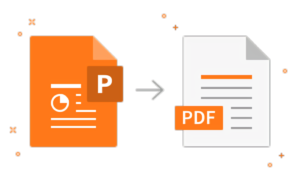How To Optimize Your On-Page SEO In Under 10 Minutes
- 1 Understanding On-Page SEO
- 2 Step 1: Use The Site Audit Tool
- 3 Step 2: Review Your Site’s On-Page SEO Score
- 3.1 On-Page SEO Score:
- 3.2 Critical Errors:
- 3.3 Warnings:
- 3.4 Page Speed Scores:
- 4 Step 3: Identify Pages With Critical Errors
- 5 Step 4: Prioritize Which Errors To Fix
- 6 Step 5: Improve Site Speed
- 7 Step 6: Recrawl To Check Progress
- 8 Step 7: Fix Issues Patiently And Persistently
- 8.1 About Page May Not Need Heavy Optimization
- 8.2 Tools/Calculator Pages Prioritize Functionality
- 8.3 Translating Duplicate Titles and Descriptions
- 8.4 Module-Wise Optimization
- 8.5 The Recurring Optimization Process
- 9 Conclusion
In this comprehensive guide, we will teach you how to optimize your on-page SEO in less than 10 minutes per optimization session. Proper on-page optimization is crucial for good SEO rankings. By following the methodology outlined here, you can significantly improve your site’s on-page factors and SEO score.
While it may take months to reach peak optimization, chipping away regularly at identified high-priority issues will compound results over time.
Understanding On-Page SEO

On-page SEO refers to elements you can optimize within individual web pages themselves to improve their search ranking potential. This includes:
- Page titles and meta descriptions
- Content quality, length and formatting
- Media utilization like images, videos and graphics
- Structured data and schema markup
- URL structure and hierarchy
- Internal linking architecture
- Page speed and technical performance
Optimizing these page-level factors helps search engines better crawl, index and understand your content, resulting in higher rankings for relevant search queries.
Combined with strong backlink profiles and site-wide optimization, comprehensive on-page SEO is essential for any marketing strategy.
Step 1: Use The Site Audit Tool
The first step is to generate a detailed audit of your site’s current on-page health.
Go to Ubersuggest.com and enter your domain name. This will run an automated SEO site audit and analysis.
The audit scans your pages, looking for optimization weaknesses and issues to address across all key on-page areas like titles, metadata, content, links, speed and technical facets.
Step 2: Review Your Site’s On-Page SEO Score

In your Ubersuggest SEO site audit report, pay attention to the following:
On-Page SEO Score:
This overall optimization score from 1-100 indicates how well your pages are optimized on key SEO criteria. Above 75 is decent, but aim higher.
Critical Errors:
These have the biggest negative SEO impact and must be addressed first. These errors may include broken links, 301 redirect links, irrelevant outgoing links, bad URL structure, broken images, bad HTML structure, missing schema data and OG tags (Open Graph Tags), duplicate content, missing or wrong canonical tags, missing meta tags like meta descriptions and titles, and search engine blockage from indexing etc.
Warnings:
Fixing warnings can also significantly improve optimization.
Page Speed Scores:
Improving site speed boosts user experience and SEO. To speed up your webpage, you can compress and convert images to WebP. WebP images are best and specifically for loading pages fast. Remove sliders if they are not important because sliders use JavaScript, and JavaScript takes too much time to load. Compress CSS files, Reduce DOM size, and Delete unnecessary and unused plugins and themes; using too many plugins is very bad for page loading time, and it also increases page size.
Step 3: Identify Pages With Critical Errors
Scroll down to view your top SEO issues, starting with Critical Errors.
Click each error to see which specific pages it is affecting and details on how to address it. Spend time understanding the problems and recommendations so you can systematically improve each facet.
Step 4: Prioritize Which Errors To Fix
With limited bandwidth, you may not be able to fix every single error identified right away.
Focus first on addressing page-level issues that are:
- High impact – Critical errors before warnings
- Easy to fix – Quicker wins
- Relevant pages – Priority content with more traffic
For example, less important pages like your About page may not need extensive optimization. Fix what reasonably makes sense for each page’s purpose.
Step 5: Improve Site Speed
Search engines reward fast-loading pages with better rankings since it signals technical competence and creates a better user experience.
Try to get your desktop and mobile site speed scores in the green (good) range.
Work with your development team or use technical solutions like content delivery networks (CDNs), browser caching, image compression, lazy loading, etc, to optimize speed.
Step 6: Recrawl To Check Progress
After making fixes, go back and click “Recrawl Website” so Ubersuggest can reanalyze your pages. Be patient, as a full site can take 15-20 mins for larger sites.
The recrawl verifies whether you have adequately addressed the specific errors and updates rankings and scores accordingly.
Keep monitoring your critical error count and on-page SEO score as you make recurring fixes. The goal is to reach as close to zero crucial issues as possible.
Step 7: Fix Issues Patiently And Persistently

Think of on-page SEO optimization as a long game of compounding small gains over months. Be focused and persistent in regularly addressing errors identified by priority level.
Some examples highlighting what a nuanced optimization path may look like:
About Page May Not Need Heavy Optimization
An About page may not need extensive content or on-page work since its purpose is a brief background. Short, engaging About page copy with visuals can be perfectly optimized for its intent.
Tools/Calculator Pages Prioritize Functionality
For tools and calculator pages, users care more about accuracy and ease of use versus heavy text content. So, readability and functionality matter more than on-page factors.
Translating Duplicate Titles and Descriptions
Any pages showing duplicate title tags and meta descriptions should be translated appropriately. For example, German and Spanish versions should not have identical page titles and descriptions as English pages.
Module-Wise Optimization
Certain sections may have characteristic issue patterns. For example, fix date, title and description parameters across all blog archives pages in one sweep for efficiency.
The Recurring Optimization Process
Get into a set monthly rhythm of:
- Running a site audit
- Identifying critical priority errors
- Developing optimization plan of attack
- Implementing fixes page-by-page
- Recrawling to validate changes
- Monitoring your on-page SEO score month-to-month
Rinse and repeat in perpetuity. Small but compounding sequential page-level optimizations will significantly boost domain authority, rankings and organic search traffic over time.
Conclusion
Optimizing on-page SEO requires unrelenting, focused attention – but you can achieve tremendous wins page-by-page. By methodically using Ubersuggest’s audit and following fixes, you can vastly boost your site’s SEO in under 10 minutes per optimization session.
The key is persistence. Keep chipping away at critical errors by priority through recurring cycles. Over months, search engines will reward your site’s ever-improving quality and relevance by better crawling, indexing, ranking and authority. Employ this on-page SEO methodology, stay patient, and growth can skyrocket.

















